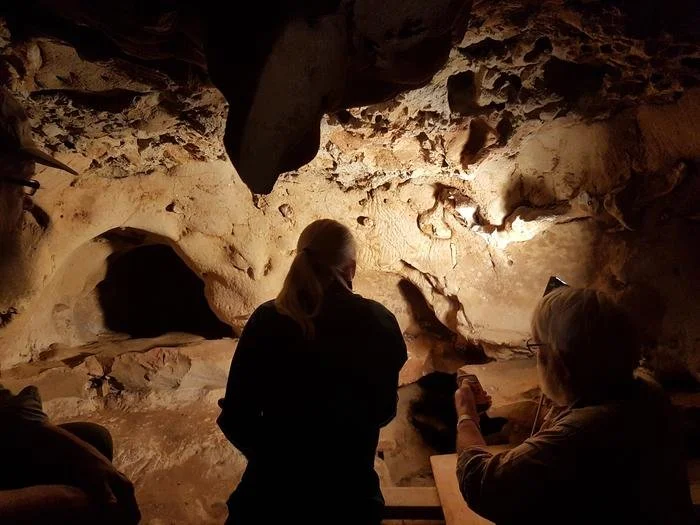Researchers have discovered the earliest example of Neanderthal art as the stripes, dots, and parallel lines carved into a cave in Central France more than 57,000 years ago. However, their meaning will probably continue to be a fascinating enigma.
Trine Freiesleben and Jean-Claude discussing the fingerprints and where to take OSL samples. Photo: courtesy Kristina Thomsen.
A recent study that tries to characterize the traces and establish that they were created by Neanderthal hands is focused on the engravings, or finger flutings, that cover the soft walls of the La Roche-Cotard in the Loire Valley. The study was recently published in the journal Plos One. They did this by creating a 3D model of the carvings (across eight different panels) and analyzing the sediment layers.
The cave, which consists of four interconnected chambers, was found in 1846 when quarrying nearby accidentally came over one of the openings. Although excavations started in the early 20th century, it wasn't until the 1970s that a full research into the chambers that extend more than 100 feet under the riverbank started. The most recent research project was started in 2008 and is being directed by Jean-Claude Marquet of the University of Tours.
Examples of engravings discovered in the Roche-Cotard cave. Photo: courtesy Jean-Claude Marquet.
The first chamber's tools and bones provided proof that it was a dwelling area, and the third chamber included engravings created by pressing and dragging fingers against the chalk wall covered in clay. The engravings have a wide range of styles; some have a grid of dots, another has wavy lines that meet at a point, and another has what looks like a fan-like pattern.
Researchers examined the dirt that had blocked the entryway to prove the engravings were done by Neanderthals. It revealed that the cave had been sealed sometime between 57,000 and 40,000 years ago, and homo sapiens are not thought to have arrived in this region of contemporary Europe until then. The engravings could be up to 75,000 years old.
The “Triangular Panel” on the wall of the cave. Image: Jean-Claude Marquet.
Lead scientist Jean-Claude Marquet stated in the report, "The artificial origin of the spatially-structured, non-figurative traces identified within the cave is established. "We come to the conclusion that the engravings from La Roche-Cotard are unmistakable examples of Neanderthal abstract design."
Recent years have seen a significant rise in scientific knowledge on Neanderthals, debunking long-held beliefs that our distant relatives were savage. Research on Neanderthal social structures and tool use has been a part of this. However, there is just a small amount of prior documentation of their carvings, mostly limited to bone markings from 40,000–50,000 years ago.









